Exercise machines, as we know them today, may seem like a relatively modern invention, but in reality, they have existed for a long time in the past.
After extensive research over many years, it has been concluded that participating in sports regularly can help increase longevity and slow down the aging process in humans. Physical activity slows down the aging of cells, helping us to look younger and live longer.
Starting from the early 20th century, people began using complex machines, quirky devices, and strange postures to achieve the ideal body shape, at least from the perspective of people at that time. To illustrate how far this industry has come, let’s take a look at some of the strangest ways people have exercised over the past century.
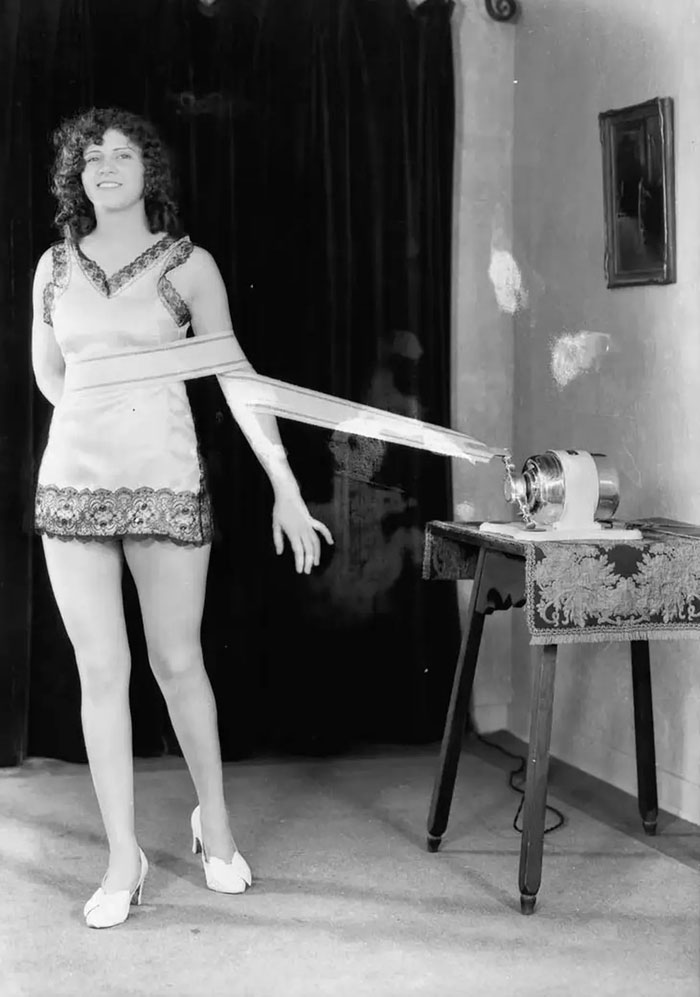
Vibrating Belt from 1929.
The 20th century marked the rise of specialized sports and the fitness industry. The emergence of fitness magazines, chains of fitness clubs, and fitness centers initiated a minimalist lifestyle based on daily vigorous workouts and the elimination of alcohol, coffee, and white bread from diets. From there, we entered an era of aesthetic body building, utilizing modern exercise machines or even high-tech workouts with various fitness applications.
For decades, thousands of exercise methods and programs have emerged, all promising to help you achieve the best life and the most beautiful physique in the shortest time possible, often with exercise equipment that looks flimsy and ineffective compared to modern machines.
The vibrating belt was invented in the 1800s, but it only became popular in the 1930s and 1950s. The idea was that this machine would create vibrations that would liquefy body fat and eventually burn it off.
Another interesting machine is the Slendo Massager. This device is a cage made of coiled springs that rolls over your stomach, hips, and thighs to melt away fat.
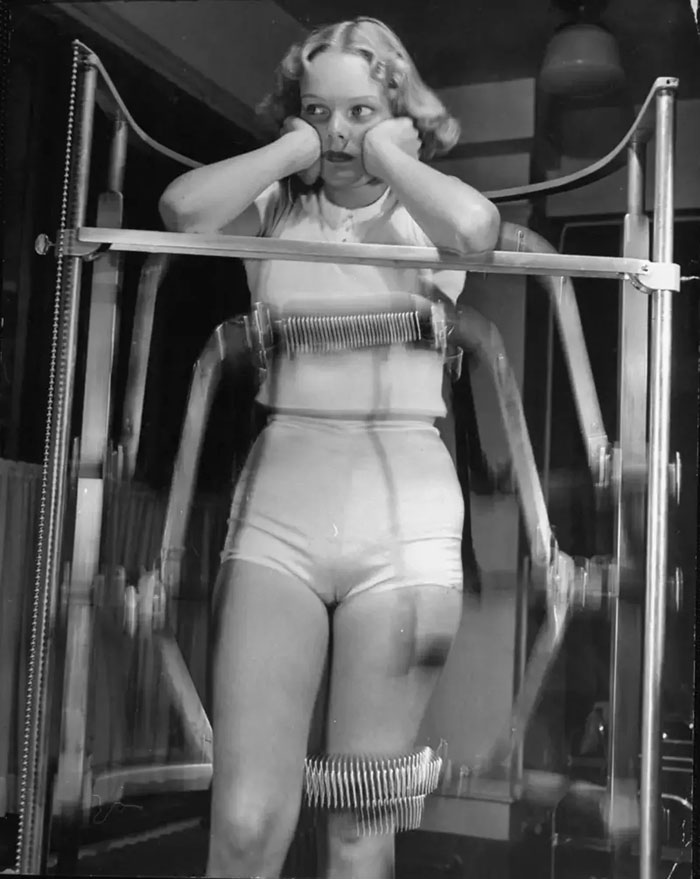
Slendo Machine in 1940.
In the 1950s, American fitness expert Jack LaLanne innovated several widely used fitness equipment. LaLanne developed the first cable pulley machine, the Smith machine, and the first leg extension machine. The mechanical principles behind these three devices can be found in gym equipment used today worldwide.
Resistance bands, essentially elastic bands that create increasing resistance when stretched, were first used by former football coach Dick Hartzell for functional training in the 1980s.
Since then, manufacturers have modified resistance bands by attaching handles and creating anchor points that allow them to mimic nearly every exercise that can be performed with free weights, but without the bulk, making them much easier to carry than free weights.
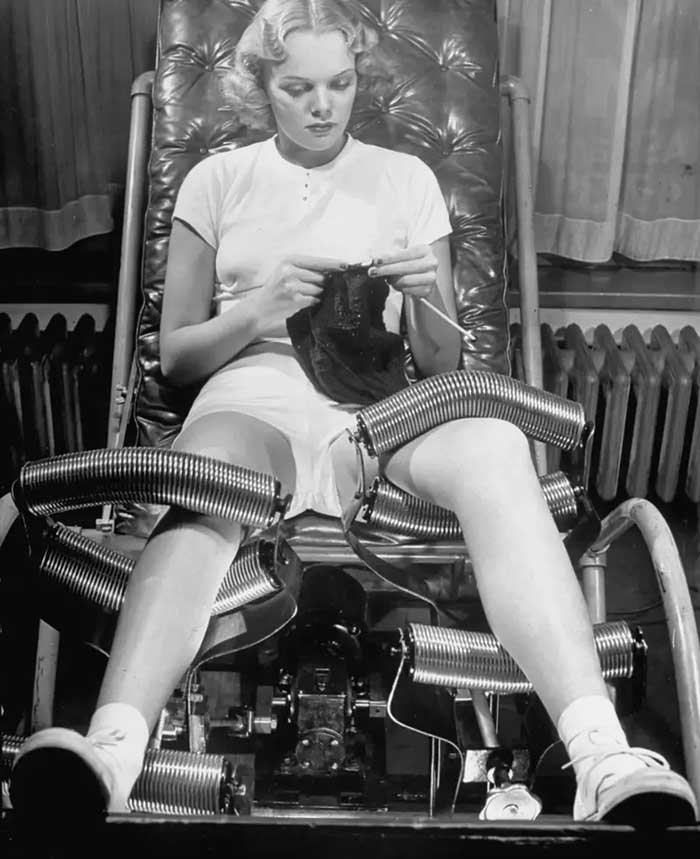
Leg Roller in the 1940s.
The most popular training equipment is the treadmill, first introduced in 1875, but it was not used for exercise; rather, it was used in agricultural production to pump water or grind grain (in earlier times, its predecessor was even used as a form of torture for criminals).
|
The treadmill was only recently used as a popular exercise machine, but in fact, historically, it was used as a tool for punishing prisoners. Additionally, punishing prisoners with a treadmill was considered one of the “extremely cruel” punishments in English prison law! The primitive form of the treadmill was essentially a type of “biological energy engine” used for agricultural production. This type of equipment was widely used. A 15th-century manuscript by Leonardo da Vinci also mentions a device quite similar to this. The manuscript describes a gigantic roller device accompanied by step-like pedals for people to walk on and make the roller turn, generating energy. |
In 1952, Dr. Robert A. Bruce from the University of Washington in Seattle began using the treadmill to test human stress levels.
This inspired entrepreneurs to transform the treadmill into a consumer exercise device, allowing people to run or walk naturally while remaining stationary. By the 1960s, treadmills had become popular in households and gyms.
The elliptical machine, which functions similarly to the treadmill but puts less stress on the lower body, was first introduced in the mid-1990s and has since become as popular as the treadmill.
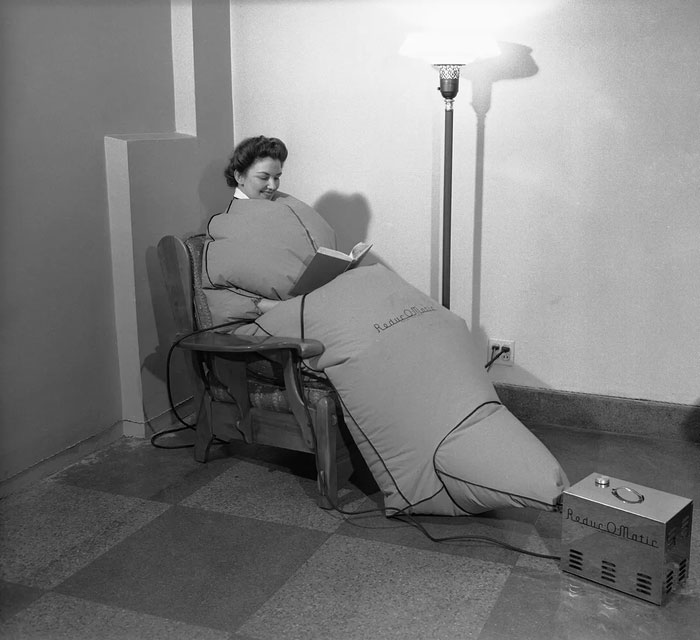
Mobile Sauna, known as Reduc-o-matic, became popular in the 1940s. It was said to melt away fat.
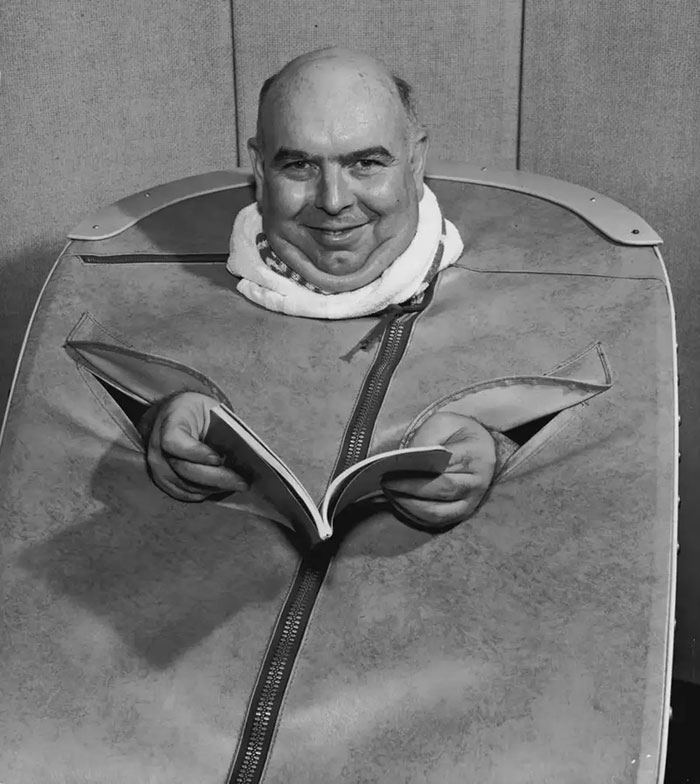
Man in Sauna in 1955.
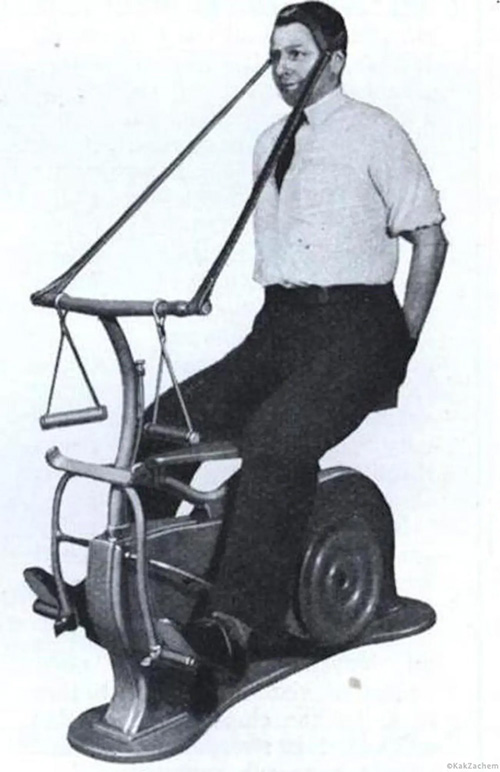
Zander Horse Riding Simulator. This machine gained significant attention because you really didn’t have to do anything other than sit and “burn” fat.
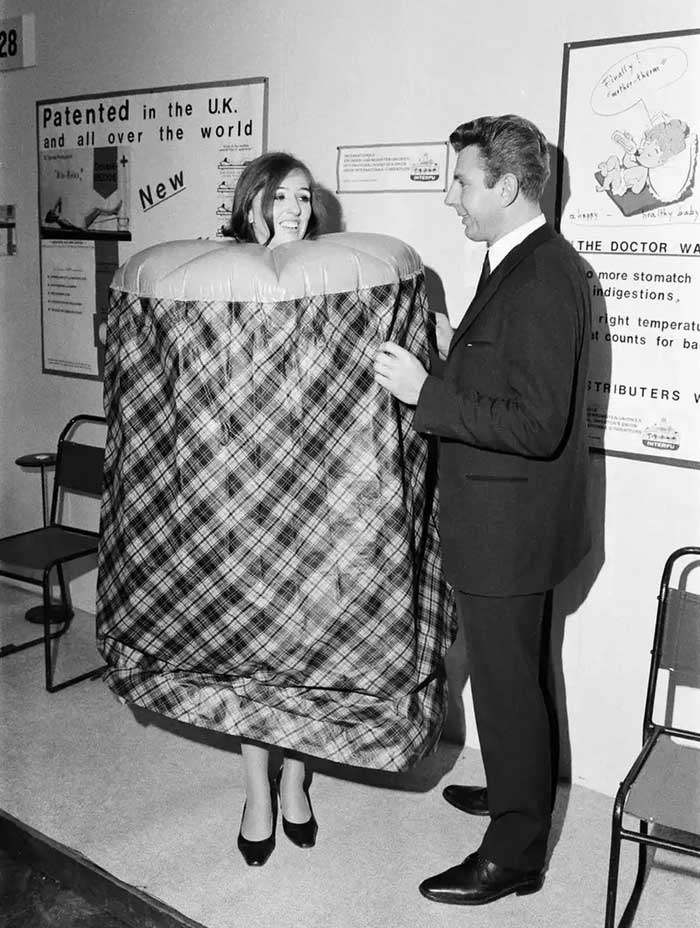
Mobile Sauna in 1969.
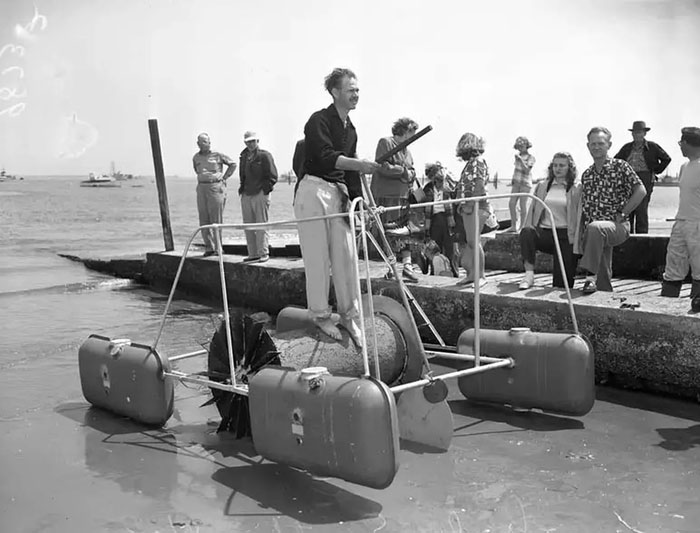
Maritime Treadmill in 1953.
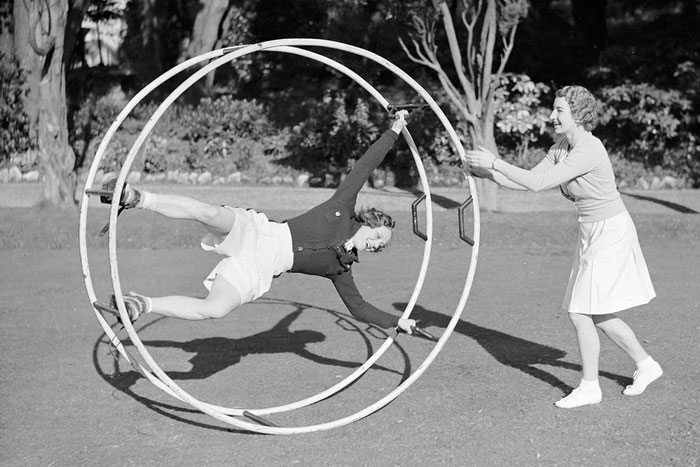
Human Hamster Wheel in 1936.
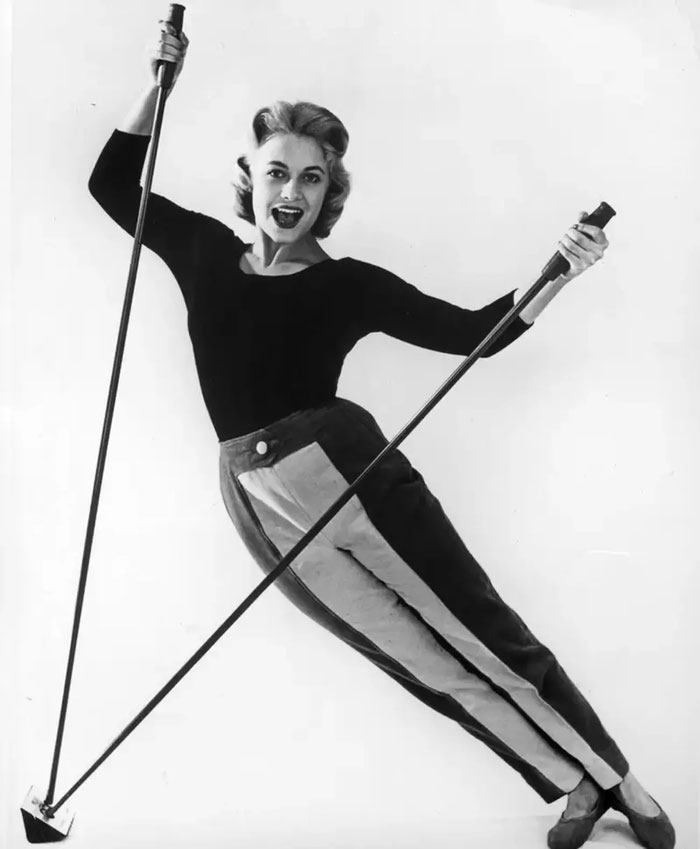
Las Picas is an exercise device that became popular in the late 1960s. It allowed users to twist in every direction.





















































